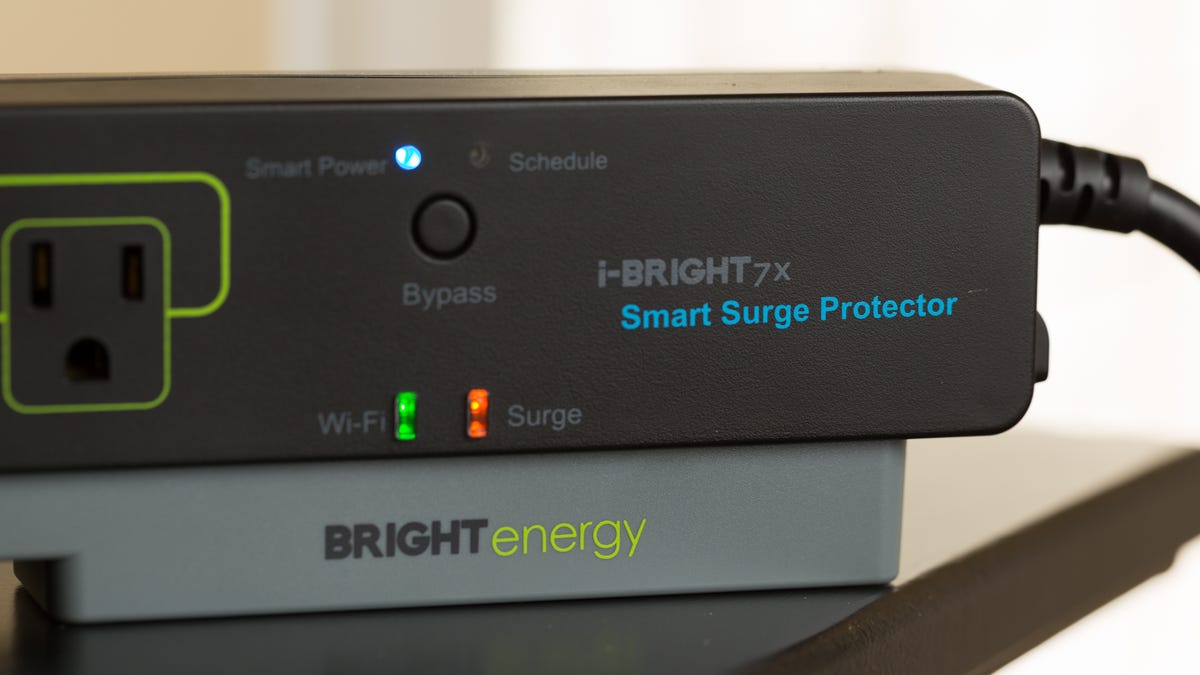Appliance Science: The surge protector
What can you do to protect your electronics from power surges? Use a surge protector. Appliance Science looks at how these devices save your gadgets.

Your appliances and gadgets love electricity. It's the stuff that brings them to life, but too much can be a bad thing. If the voltage of the electricity coming in over your wires suddenly rises, that can damage them. Electrical engineers call this kind of problem a transient voltage surge, because it comes and goes quickly. This can happen when something like a transformer blowout or a faulty appliance sends a sudden spike of energy into your home wiring. This is why many people use a surge protector to block these surges.
Surge protectors are available as small devices that plug in between your power cable and the wall socket, and many power strips come with a surge protector built in. Either way, the heart of the surge protector is a small circuit that sits across the two wires the power comes in on, watching the voltage coming through and kicks in if the voltage rises above a certain level.
They do this using a component called a varistor, or a voltage dependent resistor (VDR). Also often called a metal oxide varistor (MOV, from the material that most are made of), this component changes its resistance to electricity with the voltage. Below a certain level, it has a very high resistance, effectively blocking the flow of electricity. If the voltage rises above a certain level, that changes. When the voltage rises above this level (called the clamping level), the varistor quickly decreases its resistance, letting the energy pass through it and shunting it away from the device it is protecting. You can read more about this process here.
If you make the varistor so this clamping level is above the 110 volts of your power line, it will kick in when the voltage of the power line rises above normal. For a device that's plugged into the surge protector, this means that it doesn't get hit by the sudden increase in voltage: the varistor lets it pass through harmlessly to earth. The voltage that gets let through into the appliance is lower than the surging voltage coming into the surge protector. So, your electronics are much less likely to be damaged by this surge, because it is shunted away from them.
This comes at a cost, though. The varistor is sacrificing itself to let the surge pass through, and some of this extra energy ends up as heat. If the extra voltage remains too high for too long, the varistor could even melt, which is why they are usually accompanied by a thermal fuse that breaks the circuit if they get too hot. Even with only occasional surges, the varistor will eventually become so decayed that it won't work anymore, and will let the voltage through unimpeded.
This amount of punishment that a varistor can handle is often called the joule rating, after the unit of measurement used for energy. In theory, the higher this rating, the more energy the surge protector can handle, and the better it is. However, there is no standard way to measure this rating, so the figures supplied by different companies often aren't compatible.
This tendency for varistors to fail is why most surge protectors include more than one varistor. As one fails, the next one takes over to clamp the voltage, and so on. Some will include a warning light that shows you when the varistors have failed, letting you know that it is time to replace the surge protector. Others will shut down, blocking the flow of electricity completely to force you to replace the entire device.
So, are these things necessary? If you're in the market, you'll find a great overview of some things to think about here. For most people, you probably don't need one, as the power network is usually quite reliable. It's also well insulated and protected, so sudden surges caused by lightning strikes and other failures in the power grid seldom reach the consumer: utilities have extensive systems that can shunt this energy away or shut the system down before it reaches your home. And in the extremely rare event of a direct lightning hit on your home, the varistor is going to be immediately overwhelmed by the thousands or millions of volts involved, so it won't protect you.
However, surge protectors are a good idea if you have an off-grid power system or use a generator. These are much more prone to sudden surges, so surge protectors are needed, especially with appliances that are more sensitive to surges, such as computers and medical equipment like CPAP machines.
One thing to remember: surge protectors can save your devices from sudden surges, but they won't help if the power gets cut off. Too little power can be as bad as too much: if your computer is writing to the hard drive when the power goes out, for instance, the data can be corrupted or the drive seriously damaged. To handle this problem, you will need another type of protection called an uninterruptible power supply (UPS). We'll look at how these work in my next column.



